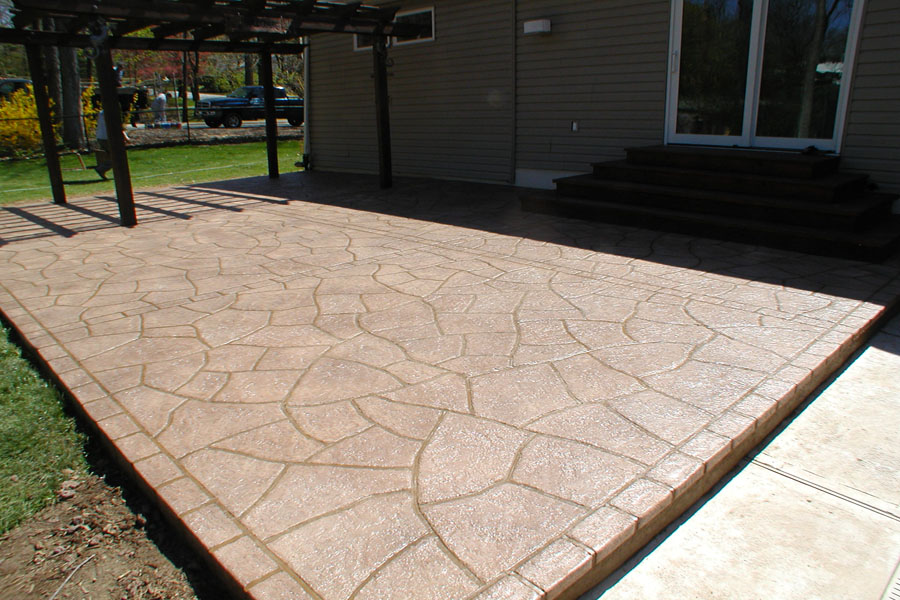
/LayingCeramicFloorTile-5b75cedc46e0fb00507045bd.jpg)
The more porous the tile, the more water it will absorb, and this is definitely something to avoid if we are installing tile outside because a porous tile that is constantly wet from rain will hold onto that water like a sponge and will degrade quickly. Depending on the materials they’re made of, tiles can have a wide range of porosities. The two most important points to consider on this list are water absorption and grip. Some of the considerations to make include water absorption, the grip of the surface, strength, budget, style, and texture. Types of Tileįirst of all, you need to pick a tile material that will work for the outdoors. Here are some of the tools and best practices that can help make your outdoor tile installation much easier. You won’t need to default to a square patio shape pre-determined by the tile sizes you purchase. The wrong choice could mean needing to re-tile the entire patio later on.Īlthough you can buy pre-cut tile for an easy job, tile installation tools can help you customize your setup. You want to choose a material that’s resilient to the elements and built to last. It may take four or five passes with the sponge to completely clean the excess grout.Ĭontinue the process of grouting and washing until all the tiles have been grouted, and then caulk in the expansion joints.Outdoor tile installation may seem like a complicated task at first. it leaves a residue behind on the tile surface), wash off the sponge by dipping it back into the bucket and wringing it once again. Otherwise, you risk pushing the grout out of the gap. Gently wipe away any excess grout on the surface of the tiles using a circular motion, and avoid wiping in the same direction as the gap. Using too much water can cause discolorations in the grout. Wring out your sponge until it's damp and not dripping any water. You should not, however, fill in the expansion joints with grout, since they need to be filled with a flexible masonry caulk.Īfter 20 to 30 minutes, fall back to the first tile you grouted with a bucket of clean water and a grout sponge. Use your grout trowel to spread the grout mixture into the gaps between the tiles until they're completely filled. Mix the grout in a bucket using the recommended ratio of water and grout mix until it reaches a smooth, clump-free consistency. When it's dry, remove the spacers and use a scraping tool to remove any excess mortar that squeezed out of the gaps and onto the surface of the tile. This can be anywhere from 12 to 48 hours, depending on the product and weather conditions. Once complete, wash off your tools and clean out your bucket.Īllow the mortar to set for the length of time indicated by the manufacturer. Continue spreading mortar and laying tiles until the slab is covered with tile. Occasionally check that the tiles are flush to each other and level throughout by resting a spirit level across the top of several tiles at a time. Continue laying tiles, applying spacers, and checking for flush and level until the area of mortar you spread is covered. Continue laying tiles side-by-side, and place spacers between each one to produce a consistent gap for the grout in the next step. Since you will largely be working on your knees while spreading the mortar and laying the tiles, consider wearing knee pads to stay comfortable and injury-free.Īpply an even layer of mortar to the underside of the tile (this is called back-buttering), and gently press the tile onto the mortar until it's well seated. Mark out these areas on the substrate using a chalk line. Generally speaking, there should be an expansion joint for every 12- to 16-feet of tile, and at any point the tile contacts a vertical surface such as walls or steps. An expansion joint is a 1/8- to 3/8-inch gap between sections of tile that accommodates the natural expansion and contraction of the tiles when exposed to different temperatures. Doing so will help to maintain your workflow once you start laying the tile by helping you avoid the need to run to the store for more tiles or stop to make cuts.Īt this point, you should also lay out where your expansion joints are going to go. Laying out your tiles in advance (dry-laying) will help to ensure that you have enough tiles to finish the job, and allows you to make any specialty cut-as needed to fit against walls and around corners, for example-before mixing and spreading the mortar.

Isolation membranes are available in rolls of rubbery fabric sheets or spreadable slurry mixtures. The Spruce Home Improvement Review BoardĬrack isolation membranes offer a barrier between the tiles and substrate, so cracks in the substrate don't telegraph into the tiles.


 0 kommentar(er)
0 kommentar(er)
